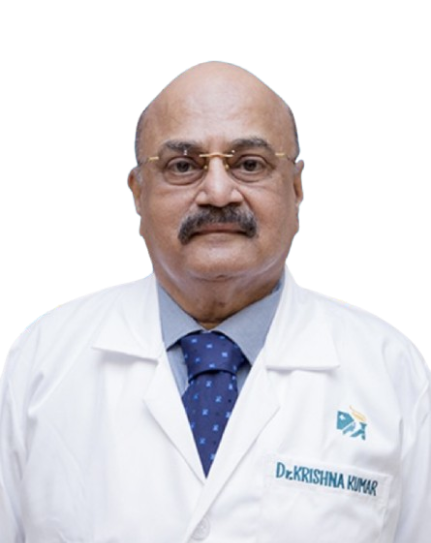Turbinate Reduction Surgery: Meaning, Procedure & Recovery

Treatment Duration
30 Minutes
------ To ------40 Minutes
Treatment Cost
₹ 50,000
------ To ------₹ 80,000

Table of Contents
- Anatomy and Physiology of Nasal Turbinate
- How is Turbinate Reduction Surgery performed?
- What to expect before and on the day of the sUurgery?
- Benefits of Turbinate Reduction Surgery
- When is consultation with the doctor needed?
- Risks of delayed turbinate reduction surgery
- Cost of Turbinate Reduction Surgery
Turbinates are small bone structures present inside the nose. The bony structure is surrounded by vascular tissue and a layer of mucous membrane from the outside. It plays an important role in cleaning /and humidifying the air that passes through the nose to the lung.
These bony structures get swollen and cause turbinate hypertrophy when there is an allergy, cold, side effects of medicines, pregnancy, infection or irritation in the nose. Thus obstructing the nasal pathway by producing a large amount of mucous, further leading to nasal congestion.
Turbinate reduction surgery is performed to treat turbinate hypertrophy. It is done by removing excess tissues from the turbinate. Turbinate reduction surgery improves the flow of air through the nasal passage. In addition, it relieves nasal congestion.
| Procedure Name | Turbinate Reduction Surgery |
| Alternative Name | Turbinectomy |
| Conditions Treated | Turbinate Hypertrophy |
| Benefits of Surgery | Outpatient procedure, Better sleep, Fewer headaches |
| Treated By | General Surgeon or ENT Surgeon |
You can check Turbinate Reduction Surgery Cost here.
Anatomy and Physiology of Nasal Turbinate
The nasal turbinate is divided into three parts. They are:
- Inferior Meatus: It is the space between the nasal floor and inferior turbinate. It helps in draining the tears via the tear duct.
- Middle Meatus: It is the nasal passage between the inferior and superior meatus. Air flows through this passage which creates voice.
- Superior Meatus: It is a nasal space between the middle and superior nasal conchae. It helps in modifying our vocal features. The mucous membrane of the superior meatus is connected with the nerve endings. It helps to smell.
Expert Doctors (10)
NABH Accredited Hospitals (10)


How is Turbinate Reduction Surgery performed?
An anesthesiologist will inject a precise dose of anaesthesia into the patient. In most cases, the surgeon performs the surgery under general anaesthesia. However, in some cases, local anaesthesia may be administered before the surgery. During surgery, the doctor will shrink the tissues of the turbinate.
Some of the methods that are used to reduce the size of turbinate are:
- Cauterization: A heated probe is inserted into the nose. It is done to reduce the size of the blood vessels of the turbinate. Due to this, the flow of blood into the turbinate is reduced. As a result of this, the turbinate tissues will shrink.
- Coblation: The meaning of the word coblation is controlled ablation. This method uses heat energy to shrink the tissues of the turbinate. The heat used in this method is kept low to not harm any nearby healthy tissues.
- Radiofrequency Turbinate Reduction: A long thin probe delivers the radiofrequency heat to the turbinate. As a result, the tissues of turbinate will gradually shrink.
- Partial Resection: A portion of the turbinate is removed in this procedure. Both soft and hard tissues of the turbinate are removed in this surgical approach.
What to expect before and on the day of the sUurgery?
Before Turbinate Reduction Surgery
- The doctor might instruct the patient not to take medicines like ibuprofen, aspirin, warfarin or any other drug that makes the blood thinner and hard to clot. Taking these medications may increase the risk of bleeding during surgery.
- Before the turbinate reduction surgery, the doctor will give the necessary instructions to the patient, including taking certain medicines before the surgery.
- The patient will be asked to not eat anything after midnight on the day of surgery.
The doctor also performs a comprehensive health analysis of the patients to determine their eligibility for undergoing the procedure.
On the day of Surgery
- The patient will be informed about the time of the surgery. Try to reach the hospital on time.
- When the patient arrives at the hospital premise, he is asked to complete the formalities. It is advantageous to accompany with family member or friend who completes the formality on the patient's behalf.
- The patient is advised to fill out the consent form.
- Hospital staff will then instruct the patient to change into the surgical gown and cap provided by the hospital.
- An ID bracelet will also be tied to the patient’s wrist. This bracelet contains information about the patient, like the patient's name, procedure, and date of birth.
- A tube is inserted in the arm through which medicines and other substances are delivered into the body. The patient is wheeled from the pre-operative room to the operation room.
During the surgery
- The whole procedure of turbinate reduction surgery is done under general anaesthesia. Due to this, the patient may not sense any kind of pain or any other sensation during the surgery.
- The staff inserts a tube into the mouth to the throat. It is done to ease breathing during the surgery.
- Sometimes, the turbinate reduction is made by using an endoscope. It is a thin tube fitted with a camera at the top. It helps the doctor visualize the internal structure of the nose in a better way.
- The duration of the surgery is of about 2 hours.
Benefits of Turbinate Reduction Surgery
The turbinate reduction surgery is done to treat turbinate hypertrophy. The surgery for turbinate reduction is recommended when other non-surgical treatments have failed. It has the following benefits:
- Outpatient Procedure: Having an outpatient surgery means that you can go home on the same day of surgery. Also, the recovery time in outpatient procedures is shorter than in in-patient procedures.
- Better Sleep: After the completion of turbinate reduction surgery, the nasal passage is cleared. As a result, the patient will experience better sleep without any nasal congestion.
- Fewer Headaches: If the turbinate is swollen, it may cause headaches. After the surgery, the turbinate is no longer swollen. Hence, the patient gets relief from headaches.
When is consultation with the doctor needed?
The patient should immediately visit the ENT surgeon if he is experiencing any of the following symptoms:
- Nasal congestion for a long time
- Reappearing sinus pain or infection
- Bleeding
- Fever
- Severe pain and difficulty in breathing
- Altered sense of smell
- Snoring
- Forehead pressure
Risks of delayed turbinate reduction surgery
If the turbinate reduction surgery is not done on time, then it may lead to the following complications:
- Infection in the sinus area which is known as sinusitis
- Frequent nose bleeding
- Difficulty in breathing through the nose
- Difficulty in sleeping
Cost of Turbinate Reduction Surgery
The cost of Turbinate Reduction Surgery ranges from ₹50,000 to ₹80,000. The cost varies based on the following factors:
- Type of Turbinate Reduction Surgery
- Age of the patient
- The medical condition of the patient
- The type of hospital facility availed - individual room or shared.
| Procedure Name | Cost Value |
| Turbinate Reduction Surgery | ₹50,000 to ₹80,000 |
Last Updated on: 15 November 2022
Author
HexaHealth Care Team
HexaHealth Care Team brings you medical content covering many important conditions, procedures falling under different medical specialities. The content published is thoroughly reviewed by our panel of qualified doctors for its accuracy and relevance.






















